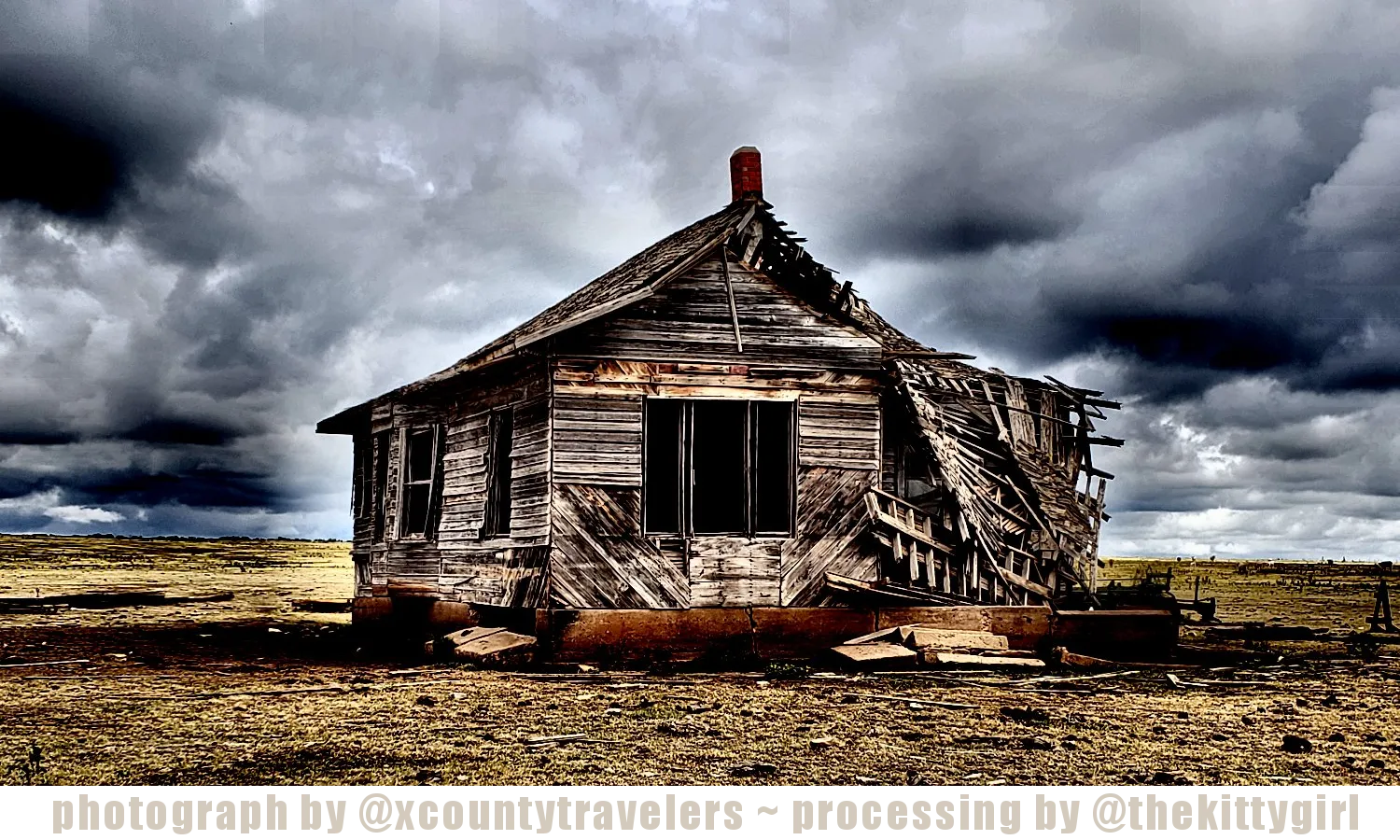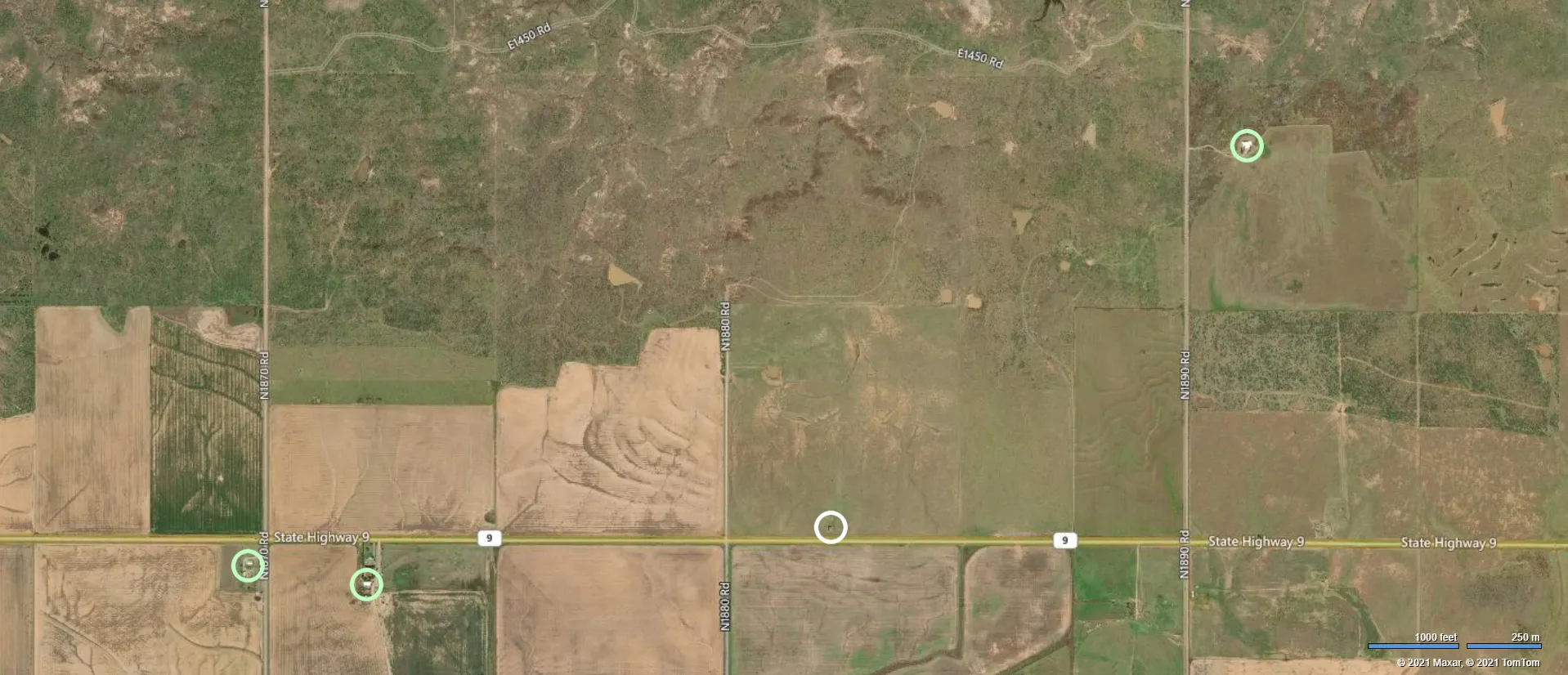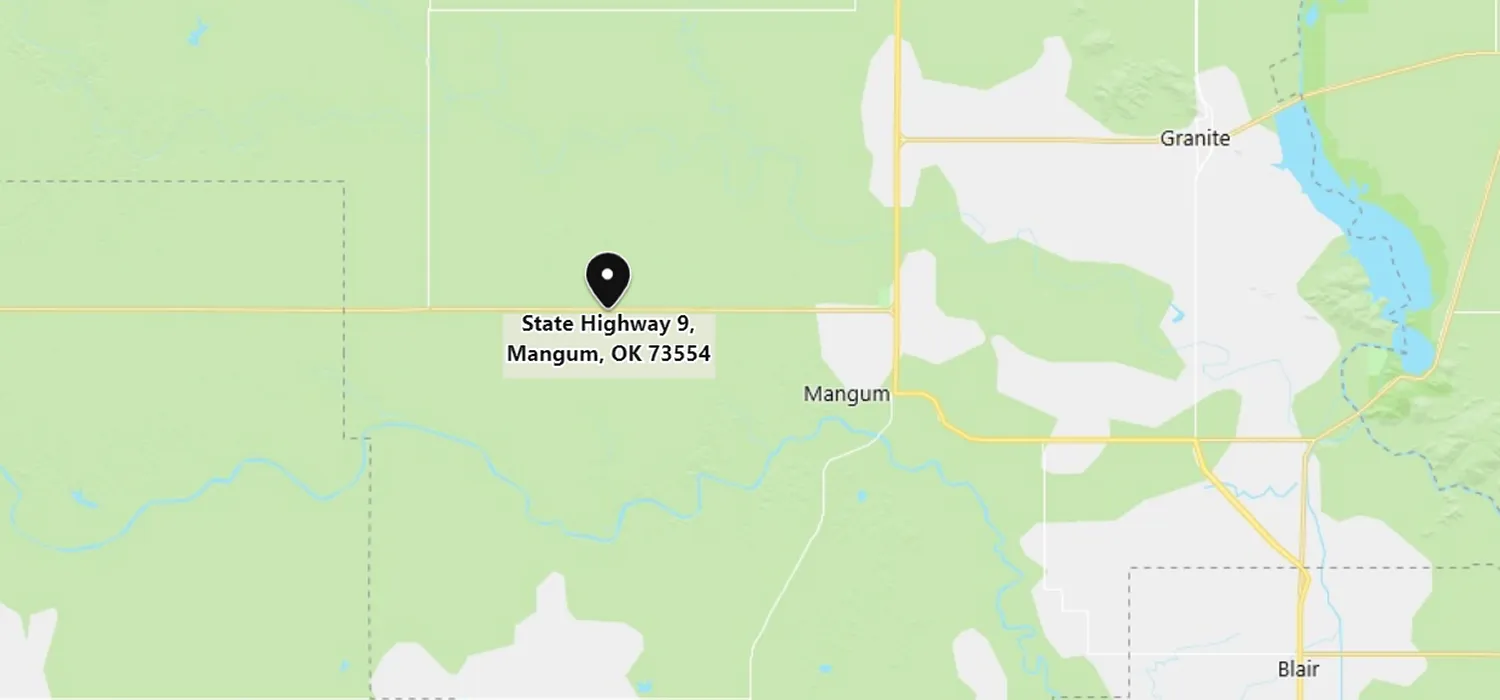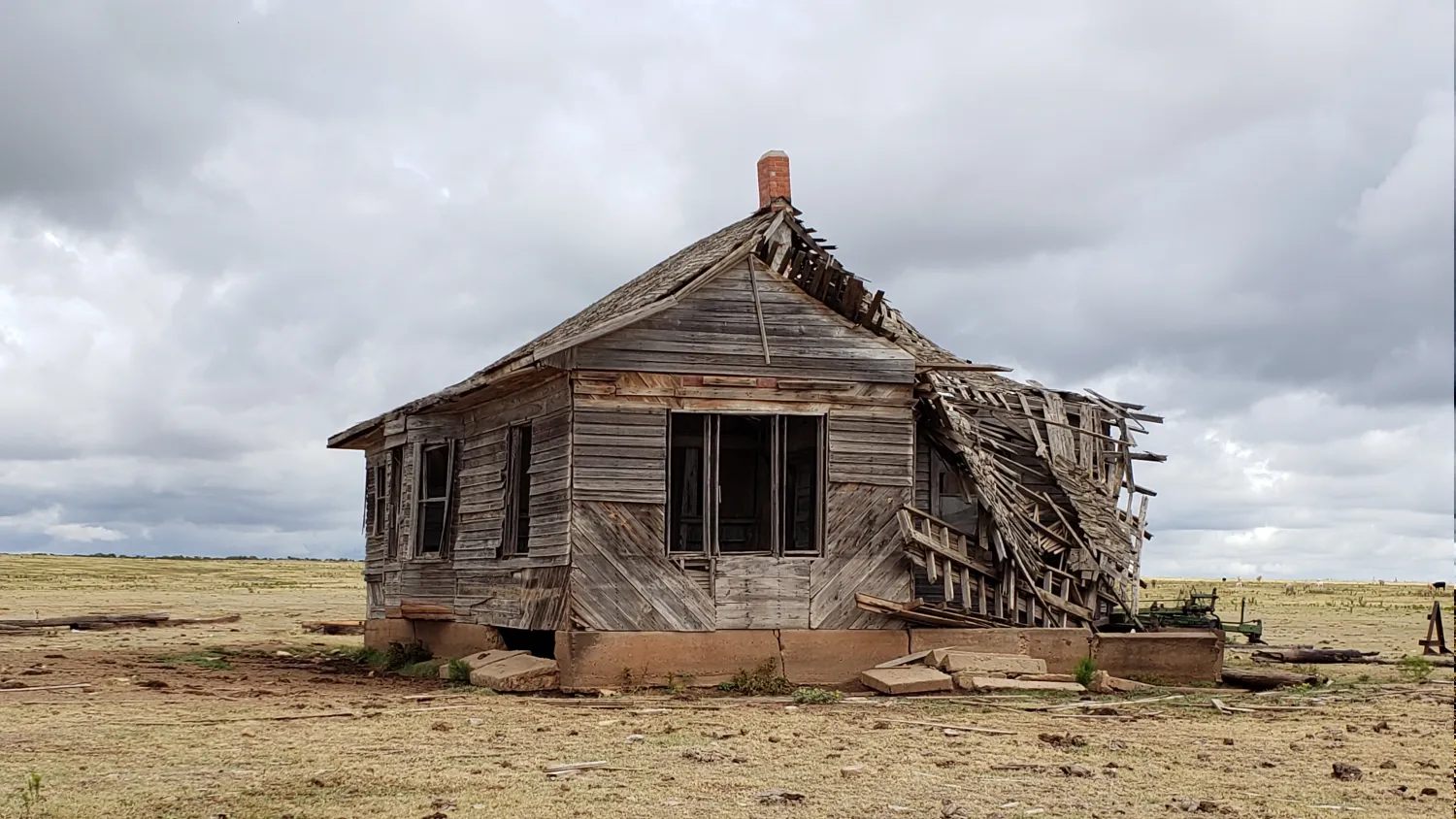I have never visited the Great Plains region of central North America, but I have seen photos from several travelers as well as some folks who live there. The absence of trees for miles and miles is astonishing to me. Having been born, raised, and lived all my life in locations that are rich with forests, it is difficult to imagine life in such a barren environment.
In one such spot on the Great Plains in the US state of Oklahoma, husband-and-wife team Ren and Scott of @xcountytravelers happened to pass by this old, abandoned house one day in their travels. Even though it's not a barn, they stopped and made a photo to share with me, which I appreciate! Not only is the ramshackle structure fascinating, but I have always enjoyed seeing photos of other parts of the world. Ren reported that there were some sporadic and powerful storms in the area that day, which served as inspiraation for the following processing.

Despite my usage of the word "barren" in the title of this post, the region is not truly barren, per se. It is only barren of trees, but is still rich in various grasses, herbs, and shrubs. The open grasslands were prime habitat for enormous herds of American Bison that once roamed free across the Great Plains. They thrived because there was never a shortage of food for their grazing — even if one location experienced a drought, they could move to another area where soft, juicy grasses abounded. Sadly, the bison were hunted almost to extinction over the first few decades of habitation by European settlers. 😢 Conservation efforts have prevented their demise, thankfully. More information about these majestic beasts can be read in the article cited in the "Sources" section at the bottom of this post.
The following aerial photograph illustrates how open this area is, with not a single tree in sight for miles! The view covers an area of roughly 1.5 miles (2.43 km) north-to-south by 3.5 miles (5.66 km) east-to-west. Zooming the map out (on BING) showed much more treeless landscape in every direction. Without trees, there is no shade in hot weather and nothing to break the cold winds in winter. It seems to me that it would be rather harsh conditions and boring scenery with nothing in-sight for miles, and I cannot fathom what life would be like in such a location.
Below, the abandoned house can be seen marked by the white circle below-center. There are three light-green circles on the map marking other houses. The brown areas are fields where crops might be planted during the growing-season, and the green patches are all open grassland.

screenshot from BING Maps
The map below shows where this former-homestead is located in southwestern Oklahoma. The nearest town is Magnum, named for a man named A.S. Magnum who owned the land which later became the town. Because of the open grasslands, the primary economy of the area was cattle ranches. Some of the local people unrolled empty tin cans and nailed them to the wooden sidewalks in front of the stores, giving the town the nickname "Tin City." [3] Such an interesting anecdote! 😁

screenshot from BING Maps
Below is the original photo which @xcountytravelers sent to me before I enhanced the contrast and darkened the scene to make it look a bit more foreboding. Again, I am in awe of the relative emptiness of the land around the homestead!

Many thanks to Ren and Scott for sharing another interesting photo from your travels! You are 50% beneficiary on this post!
SOURCES 1 Wikipedia: American Bison 2 Wikipedia: Great Plains 3 Wikipedia: Magnum, Oklahoma







28-Jan-2021
Return from The Barrens of Oklahoma to 𝕜𝕚𝕥𝕥𝕪's Web3 Blog

